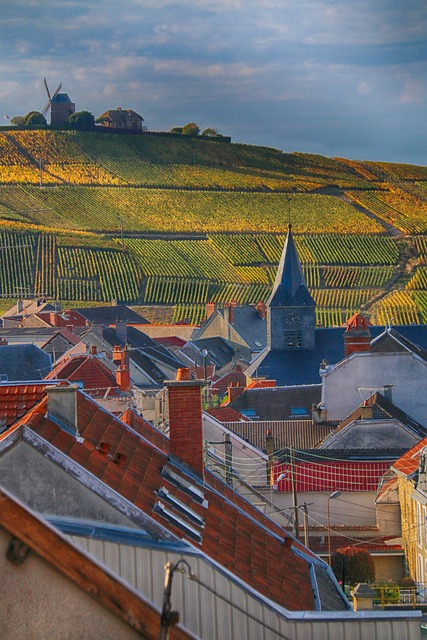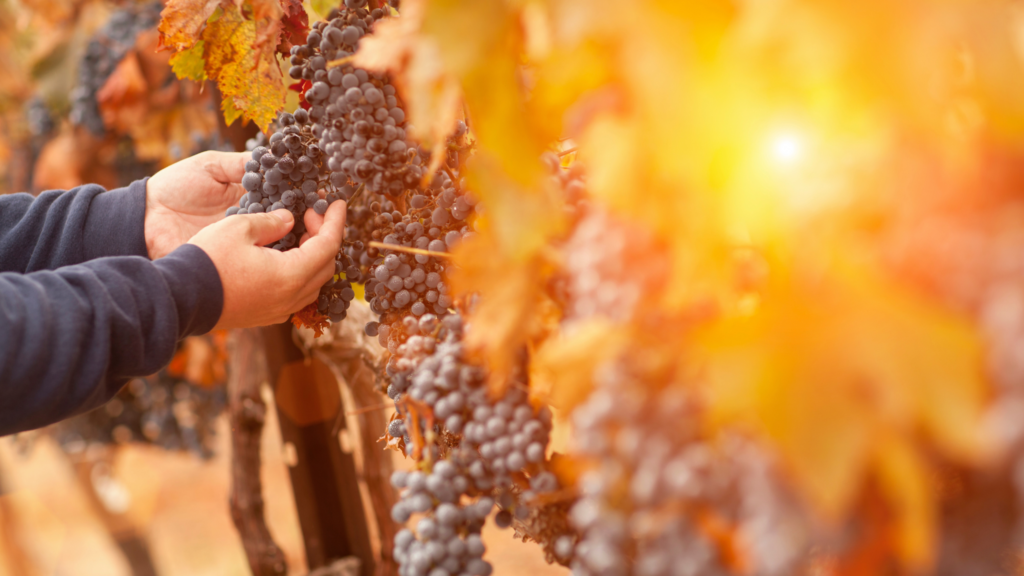-
Table of Contents
- Exploring the Benefits of Irrigation for Overcoming Challenging Terroir in Colorado’s Grand Valley AVA
- Utilizing Soil Amendments to Combat Poor Drainage and Low Nutrient Levels in Colorado’s Grand Valley AVA
- Strategies for Managing High Elevation and Low Temperatures in Colorado’s Grand Valley AVA
- Q&A
The Grand Valley AVA in Colorado is a unique and challenging terroir for winemakers. With its high elevation, extreme temperatures, and low rainfall, it can be difficult to produce quality wines in this region. However, with careful planning and innovative techniques, winemakers have been able to overcome these challenges and produce some of the best wines in the state. In this article, we will explore the unique terroir of the Grand Valley AVA and discuss how winemakers have been able to successfully overcome the challenges of this region. We will also discuss the different grape varieties that are grown in the Grand Valley AVA and the techniques used to produce quality wines in this region.
Exploring the Benefits of Irrigation for Overcoming Challenging Terroir in Colorado’s Grand Valley AVA
Colorado’s Grand Valley AVA is a unique and challenging terroir for grape growers. The area is characterized by its high elevation, extreme temperatures, and low precipitation. These conditions can make it difficult to produce high-quality grapes. Fortunately, irrigation can help overcome these challenges and allow growers to produce exceptional wines.
Irrigation is the process of supplying water to plants to supplement natural rainfall. In the Grand Valley AVA, irrigation can help to ensure that grapevines receive the water they need to thrive. This is especially important during the hot, dry summer months when rainfall is scarce. By providing a consistent source of water, irrigation can help to reduce the risk of drought-related crop losses.
In addition to providing a consistent source of water, irrigation can also help to improve the quality of grapes. By controlling the amount of water available to the vines, growers can ensure that the grapes receive the optimal amount of water for their development. This can help to produce grapes with higher sugar levels, better color, and more intense flavors.
Finally, irrigation can also help to reduce the risk of disease and pests. By providing a consistent source of water, irrigation can help to reduce the risk of fungal diseases and insect infestations. This can help to ensure that the grapes are healthy and of the highest quality.
Overall, irrigation can be a valuable tool for overcoming the challenging terroir of Colorado’s Grand Valley AVA. By providing a consistent source of water, irrigation can help to reduce the risk of drought-related crop losses, improve the quality of grapes, and reduce the risk of disease and pests. With the help of irrigation, growers in the Grand Valley AVA can produce exceptional wines that showcase the unique characteristics of the region.
Utilizing Soil Amendments to Combat Poor Drainage and Low Nutrient Levels in Colorado’s Grand Valley AVA

Colorado’s Grand Valley AVA is a unique and beautiful wine-growing region. Unfortunately, it is also prone to poor drainage and low nutrient levels in the soil. This can lead to stunted vine growth and poor-quality grapes. Fortunately, there are several soil amendments that can be used to combat these issues.
One of the most effective soil amendments for improving drainage and nutrient levels is compost. Compost is made up of organic matter such as leaves, grass clippings, and food scraps. It helps to improve the structure of the soil, allowing for better water retention and drainage. It also adds essential nutrients to the soil, such as nitrogen, phosphorus, and potassium.
Another effective soil amendment is gypsum. Gypsum is a mineral that helps to break up clay soils, allowing for better drainage. It also helps to reduce soil acidity, which can be beneficial for certain grape varieties.
Finally, cover crops can be used to improve soil health. Cover crops are plants that are grown between vine rows to help improve soil fertility. They help to add organic matter to the soil, as well as nitrogen and other essential nutrients.
By utilizing these soil amendments, growers in Colorado’s Grand Valley AVA can improve drainage and nutrient levels in their vineyards. This will help to ensure that their vines are healthy and productive, and that they are producing high-quality grapes.
Strategies for Managing High Elevation and Low Temperatures in Colorado’s Grand Valley AVA
1. Layer Up: When visiting Colorado’s Grand Valley AVA, it’s important to dress in layers. This will help you stay warm and comfortable in the cold temperatures. Make sure to wear a hat, gloves, and a scarf to keep your head and neck warm.
2. Stay Hydrated: The high elevation in Colorado’s Grand Valley AVA can cause dehydration. Make sure to drink plenty of water throughout the day to stay hydrated.
3. Avoid Alcohol: Alcohol can make you more susceptible to the cold temperatures. Avoid drinking alcohol while visiting the Grand Valley AVA.
4. Bring Sunscreen: Even though the temperatures are cold, the sun can still be strong. Make sure to bring sunscreen to protect your skin from the sun’s rays.
5. Take Breaks: Take breaks throughout the day to warm up and rest. This will help you stay comfortable and enjoy your time in the Grand Valley AVA.
6. Wear Sunglasses: The sun’s rays can be strong in the Grand Valley AVA. Make sure to wear sunglasses to protect your eyes from the sun’s rays.
7. Bring a Hot Drink: Bring a hot drink with you to help keep you warm. Hot tea, coffee, or hot chocolate are all great options.
8. Wear Appropriate Footwear: Make sure to wear appropriate footwear for the terrain. Sturdy boots with good traction are recommended.
9. Bring a Flashlight: The days are shorter in the Grand Valley AVA, so make sure to bring a flashlight with you in case you need to find your way in the dark.
10. Check the Weather: Before you visit the Grand Valley AVA, make sure to check the weather forecast. This will help you plan accordingly and make sure you’re prepared for the cold temperatures.
Q&A
Q: What are some of the challenges of growing grapes in Colorado’s Grand Valley AVA?
A: The Grand Valley AVA is located in western Colorado and is known for its extreme weather conditions. The area experiences large temperature swings between day and night, and the soil is often dry and nutrient-poor. Additionally, the area is prone to hail and frost, which can damage the grapes.
Q: How do winemakers in the Grand Valley AVA overcome these challenges?
A: Winemakers in the Grand Valley AVA have developed a variety of strategies to overcome the challenges of the terroir. These include planting drought-tolerant grape varieties, using irrigation and soil amendments to improve soil fertility, and using canopy management techniques to protect the grapes from hail and frost.
Q: What are some of the benefits of growing grapes in the Grand Valley AVA?
A: Despite the challenges, the Grand Valley AVA is known for producing high-quality wines with intense flavors. The area’s extreme temperature swings allow for a long growing season, which helps the grapes to develop complex flavors. Additionally, the area’s nutrient-poor soils help to produce wines with a unique minerality.The Grand Valley AVA is a unique and challenging terroir for winemakers. With its high elevation, extreme temperatures, and low rainfall, it can be difficult to produce quality wines. However, with careful vineyard management, innovative winemaking techniques, and a commitment to quality, winemakers in the Grand Valley AVA have been able to overcome these challenges and produce some of the best wines in the world. With its unique terroir, the Grand Valley AVA is a great place for winemakers to explore and create new and exciting wines.
![]()










